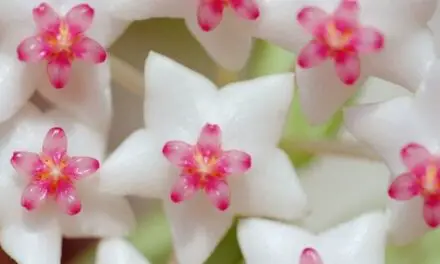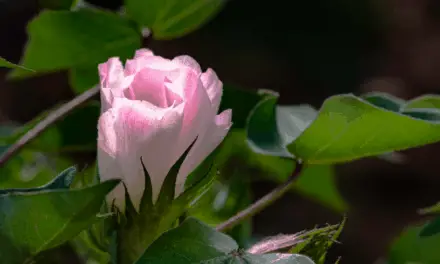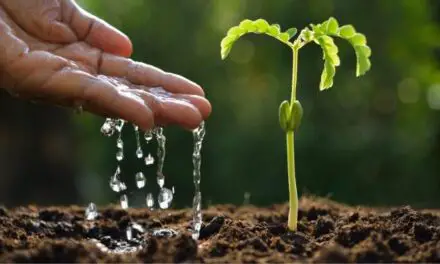We’re well aware that plants need light to photosynthesize, but can they still use moonlight to produce their own food and energy?
After all, moonlight is a result of the sun reflecting off the moon’s surface, so why shouldn’t plants be able to take advantage of it too?
Table of Contents
Can A Plant Photosynthesis In Moonlight?

Moonlight is roughly 400,000 times fainter than direct light from the sun so it is highly unlikely that there’s enough energy for plants to photosynthesize effectively in the moonlight.
However, moonlight from a full moon has been shown to support a tiny amount of photosynthesis in plant life like algae and plankton.
Science has not yet definitively proven this one way or the other, but it seems unlikely that plants can do any meaningful photosynthesis using moonlight, and in fact, they might actively try to avoid moonlight.
Moonlight is very varied, which can upset their rhythms, and many plants fold up their leaves and flowers at night.
Sometimes, however, the moon may help plants too.
You Might Like: Can Plants Grow Without Water?
Do Plants Like Moonlight?
It is not entirely clear why moonlight might upset some plants, or if it does at all.
It may just be a coincidence that the moon is shining when plants need to close up for different reasons.
The cold can make plants fold up.
It is possible that plants that fold away do so to try and maintain their warmth, rather than to avoid the moonlight hitting their leaves.
There could also be other reasons to fold up – such as defense from pests and predators.
Moonlight May Affect A Plant’s Circadian Rhythm
However, it is possible that the moon’s light can disrupt a plant’s circadian rhythm.
This rhythm helps regulate their growth, and if it is affected by the uneven and changing light of the moon, perhaps the plants suffer and cannot grow so effectively.
This may not be true of all plants, or even true of any – science does not yet have concrete answers to these questions.
If you have observed plants curling away from moonlight, it could be for entirely different reasons.
However, the moon is bound to have an effect on plants, even if we don’t know what it is.
Is Moonlight Good For Plants?
Some scientists have speculated that moonlight may help plants.
Most agree that moonlight is not strong enough for plants to be able to photosynthesize, however.
Plants need to expend energy in the photosynthesizing process, and that energy won’t be recouped if the light is too low.
Light from the sun can be measured in lux, and it might produce around 100,000 lux (lumens per square meter).
By comparison, the moon probably only produces 0.1 lux.
The moon may not also contain as much of the light spectrum as true sunlight, and this could also present problems to a plant trying to use its light to photosynthesize.
The plant needs certain wavelengths that it can utilize, and if the moon doesn’t offer enough of these, it isn’t useful for photosynthesis.
At night, most plants stop photosynthesizing and produce carbon dioxide instead.
Many old wives’ tales about moonlight and plants being more potent at certain times of the moon’s cycle have been dismissed, but modern science is starting to revisit a few.
Can Moonlight Affect A Plant’s Growth?
It is thought that moonlight, which has slightly more infrared than sunlight, could affect many aspects of a plant’s growth.
For example, it may affect how a plant stores and uses the starches it takes in; some scientists speculate that plants use more of these starches when the moon is approaching its fullest, and store more when it is waning.
Moonlight May Help Plants Heal And Boost Immunity
It has also been observed that plants that are deprived of moonlight may not heal from damage as effectively as plants that experience moonlight.
This suggests that the moon is important to the health of plants, even if they don’t use its light to photosynthesize.
Furthermore, there is speculation about whether the moon can affect the water in a plant’s cells.
It is not yet clear how, or why, but overall, it seems that moonlight may have at least some influence over a plant’s ability to regrow after injury, as well as improving a plant’s immunity and its general day-to-day growth.
This may be surprising, especially if you consider that the moon is only about 15% as strong as the sun even when it is at its peak.
It seems that they do benefit, but there is a lot we still do not really understand about how this works and why it works.
Can Plants Photosynthesize Without Light?
Plants can not carry out photosynthesis without a source of light.
All plants require some amount of light for photosynthesis, the process by which a plant converts light, oxygen, and water into carbohydrates to use for energy.
The process of photosynthesis creates food for plants by converting solar energy into chemical energy using electrons and protons from water.
Without a source of light, the process of photosynthesis cannot take place.
Conclusion
It does not seem likely that plants can get enough energy from the moon to photosynthesize, and as far as we know, plants don’t photosynthesize at night; they output carbon dioxide because the “factories” in the leaves have shut down.
However, it is possible that the moon has other effects on plants, and we need to do a lot more research to understand this properly.




